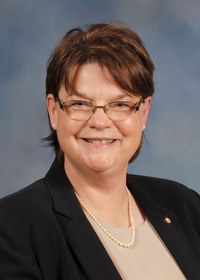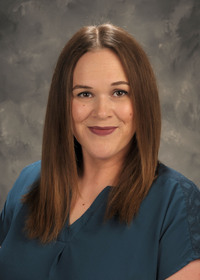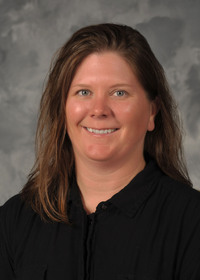Information Possibly Outdated
The information presented on this page was originally released on April 8, 2004. It may not be outdated, but please search our site for more current information. If you plan to quote or reference this information in a publication, please check with the Extension specialist or author before proceeding.
Program promotes good health ABC's
MISSISSIPPI STATE -- There's an epidemic across the nation that can't be stopped with any type of medication. Obesity, especially in children, is reaching alarming proportions in the United States and Mississippi has the highest per capita number of overweight children.
"The majority of children become overweight because of poor eating habits, inadequate exercise and other lifestyle factors," said Sylvia Byrd, associate professor in Mississippi State University's School of Human Sciences. "The results can lead to health problems later in life ranging from diabetes to cardiovascular disease."
Byrd is a member of a team of MSU experts from a variety of disciplines tackling the state's childhood health problems through a coordinated school health program named CATCH, or Coordinated Approach to Child Health. They are busy building an alliance of parents, teachers, child nutrition personnel, school staff and community members to teach children and families how to be healthy for a lifetime.
Coordinated school health seeks ways to improve the health of children in K-2 schools by focusing on comprehensive school health education; physical education; school health services; school nutrition services; school counseling, psychological and social services; healthy school environment; school-site health promotion for staff; and family and community involvement.
"When you look at the possibilities for improving the welfare and health of the population of this state, you see that proactive intervention at the childhood level is the best way to solve problems -- before they become health issues," said Vance Watson, MSU's vice president for agriculture, forestry and veterinary medicine.
Seed money to initiate the program in the state came from the Mississippi Agricultural and Forestry Experiment Station. Providing expertise are MAFES scientists, MSU Extension Service specialists, faculty and staff from several departments within the College of Agriculture and Life Sciences, and members of the Department of Kinesiology, who are developing exercise programs for use with the project.
"A school is the one environment with the greatest potential to impact the most individuals over time," Byrd said. "By collecting data at schools, we can identify the behaviors and barriers to physical activity and good nutrition."
CATCH began as a research study founded by the National Heart, Lung, and Blood Institute, a part of the National Institutes of Health. The Mississippi program, Byrd said, is the first to take a comprehensive approach to the links between school environment and health, and as a result, is being closely watched by the U.S. Environmental Protection Agency.
The pilot school for the Mississippi CATCH project is Starkville's Sudduth Elementary School. Byrd is coordinating a community-driven advisory council to work with MSU personnel on the project. The group also is publishing a newsletter and has sponsored a program for parents on healthy snacks.
Starkville School District nutrition director Beverly Lowry said menu and recipe analysis is done regularly in all cafeterias in the district, but CATCH is providing a fresh approach.
"What we particularly like is the inclusion of adults to work with us to help the children make good food choices when they go home," she said.
Home involvement is a critical part of the program, said Jane Clary, associate Extension professor of human sciences.
"We will be working with parents to help them continue the instruction provided at school," she said. "The goal is to help children make healthy eating and other lifestyle choices a permanent part of their lives."
CATCH is about making healthy choices in all aspects of life and as such, it involves some areas of expertise that might seem surprising.
For example, MSU landscape architecture and interior design students are studying ways to adapt the school environment to promote a more active lifestyle.
The almost 40 students are divided into six teams under the direction of Pete Melby, director of the Center for Sustainable Design and associate professor of Human Sciences Beth Miller. Each team is developing interior and exterior plans for Sudduth that promote both health and learning.
"We're looking at ways to use more natural finishes and other 'green' products in classroom construction and design as a way to eliminate potential pollutants in interior air," Miller said. "Studies have shown that natural daylight promotes learning better than artificial light, so we're also looking at ways to bring more natural light into classrooms."
The student teams also are looking at ways to actually move some classroom activity outside, Melby said.
"Some of the student designs incorporate outdoor patios into classrooms to encourage teachers to schedule activities that include outdoor learning," he said. "Opening classrooms to the outside and placing more plants in the landscape also helps improve the quality of air students breath while at school."
Incorporating those design elements at Sudduth, he added, can make the Starkville school a model for others in the state.
Starkville School Superintendent Phil Burchfield also anticipates a statewide impact.
"We are pleased to be part of this opportunity to improve the lives of our children and ultimately the lives of all children in Mississippi," he said.






